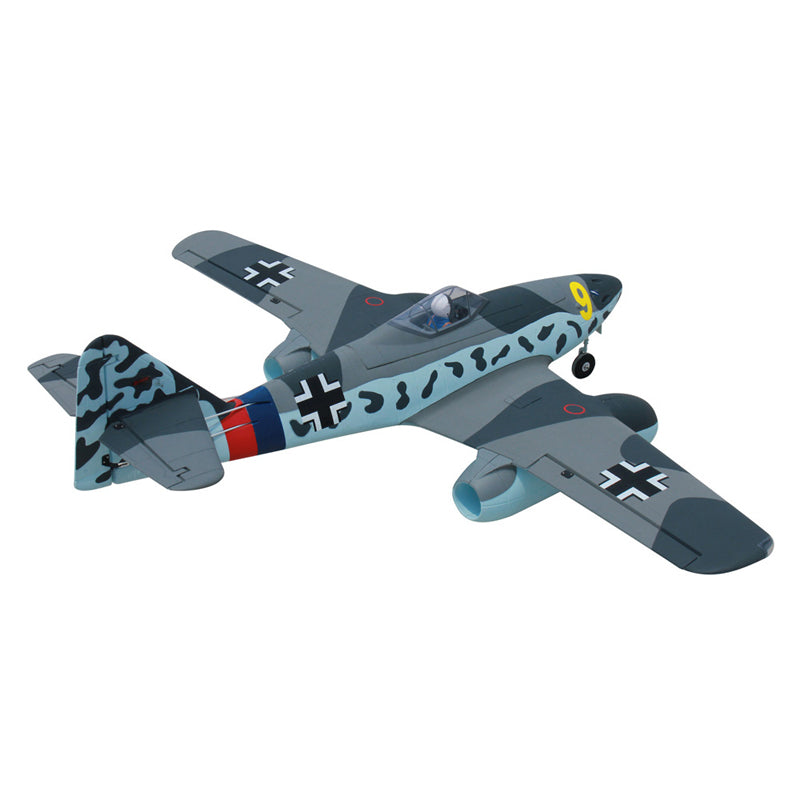What Are Some Advanced RC Flying Techniques?

As an experienced RC pilot with over 15 years of flying and building RC aircraft, I’ve had the opportunity to master many advanced flying techniques. These techniques can significantly improve your control, precision, and overall experience when flying RC models. Whether you’re interested in aerobatics, scale flying, or mastering high-speed maneuvers, advanced RC flying techniques will help you elevate your skills.
In this article, I’ll share some of the key advanced techniques I use when flying my RC planes, particularly with Dynam brand aircraft, including the Dynam Messerschmitt Me-262 V2 4S Twin 70mm EDF RC Jet, a model that has tested my flying precision and control. Let’s dive into the advanced flying techniques you should be aware of to take your RC flying to the next level.

1. Mastering the Basics Before Moving to Advanced Techniques
Before we dive into more advanced techniques, it’s crucial to understand the basics. Advanced techniques rely heavily on fundamental skills, such as:
- Basic Control Inputs: Familiarity with throttle, rudder, aileron, and elevator controls.
- Orientation: Keeping track of your plane’s orientation in the air, especially during maneuvers like loops and rolls.
- Flight Stabilization: Understanding how to use flight stabilizers and gyros for smoother flights.
Mastering these basics allows you to confidently execute more complicated maneuvers later.
2. Flying Dynamic Aerobatics
Aerobatics is a popular aspect of advanced RC flying. It involves performing various stunts like loops, rolls, and other high-speed maneuvers. Here are some tips for mastering aerobatics:
a. The Immelmann Turn
The Immelmann is a half-loop followed by a roll, resulting in a change of direction while gaining altitude. This maneuver is often used for combat-style flying or in scale RC jet displays.
- How to Perform: Start by flying straight and level. Pull up into a loop. At the top, roll your plane 180 degrees to complete the maneuver. You should emerge flying in the opposite direction with a higher altitude.
For example, when flying my Dynam Messerschmitt Me-262 V2, this maneuver is perfect because of its twin-engine stability and excellent high-speed performance.
b. The Split-S Maneuver
This is a reverse maneuver, where you start in an inverted position, pull a half-loop, and end up level with the ground. This maneuver is great for avoiding threats in a simulated combat scenario.
- How to Perform: Start inverted and pull back on the elevator to initiate the half-loop. As you complete the loop, make sure to level out before you crash into the ground.
This is one of the maneuvers I love to perform with my Dynam Me-262, especially because it’s a fast jet and handles quick directional changes beautifully.
c. Knife Edge Flight
This maneuver requires maintaining level flight with the plane’s fuselage nearly perpendicular to the ground. This is an excellent way to show off your RC plane’s aerobatic capabilities.
- How to Perform: While flying level, roll the plane 90 degrees to the side until the wings are vertical. Hold that position while adjusting throttle to maintain speed.
The Dynam Messerschmitt Me-262 V2 is particularly adept at this maneuver, thanks to its aerodynamic design and powerful EDF engines.
3. High-Speed Jet Flying
Flying RC jets like the Dynam Messerschmitt Me-262 V2 4S Twin 70mm EDF RC Jet requires a specific set of techniques because of their speed, power, and responsiveness. Here’s how to master high-speed flying:
a. Throttle Management
RC jets are high-speed machines, so proper throttle management is critical. Too much throttle can result in instability, while too little can lead to stalling.
- Tip: Keep your throttle smooth and adjust gradually during maneuvers. When performing high-speed runs, ease into full throttle and back off slightly as you approach high-speed limits to maintain control.
b. Landing at High Speed
Landing a jet at high speeds can be tricky. To manage this, use a flap extension and low throttle approach to ensure a stable landing.
- How to Perform: As you approach the runway, decrease your throttle while simultaneously extending the flaps to generate more lift. Slowly decrease the altitude, ensuring your approach is straight and controlled.
I’ve used these techniques in my own Me-262 flights, and it’s crucial for ensuring a smooth landing, especially after a fast pass.
4. Combat-Style Flying
If you’re flying in a more competitive or combat-style environment, advanced techniques like dogfighting and coordinated turns are essential.
a. Coordinated Turns
This involves using ailerons and rudder in harmony to keep the plane level during a turn. It prevents adverse yaw and ensures you don’t lose altitude or speed during the turn.
- How to Perform: While turning, apply rudder in the direction of the turn to help maintain the plane’s path and prevent unwanted yaw.
b. Defensive Maneuvers
To avoid a collision with other aircraft in combat-style flying, you need to execute evasive maneuvers like barrel rolls or high-speed sharp turns.
- Tip: Keep an eye on your opponent’s position. If they are behind you, quickly perform a barrel roll or perform a split-s to turn the tables on them.
The Me-262 is well-suited for these maneuvers, as its high-speed capabilities and twin-engine design make it agile during evasive actions.
5. Scale Flying
Scale flying is all about mimicking the behavior of real-world aircraft. This requires a high level of control and finesse, especially for high-performance models like the Dynam Me-262.
a. Smooth, Realistic Movements
Scale flying requires that you make smooth control inputs. Rapid, jerky movements are not characteristic of full-size aircraft and should be avoided.
- Tip: Plan your flight path in advance and keep your turns, climbs, and descents gentle and realistic. Imagine how the real-world plane would behave.
b. Using Flight Stabilization Systems
Many modern RC aircraft, including those from Dynam, come equipped with stabilization systems. These systems can help smooth out the flight experience, especially during scale maneuvers.
- Tip: Utilize your plane’s gyro stabilizer to keep it steady during high-speed passes or low-level maneuvers. This helps avoid instability during intricate movements.
6. Frequently Asked Questions (FAQ)
Q1: How do I improve my reaction time for advanced maneuvers?
A1: Practice is key. The more you fly, the faster you’ll react. Additionally, using simulators to practice complex maneuvers can sharpen your reflexes.
Q2: How do I avoid stalling at high speeds?
A2: Ensure you’re maintaining enough throttle and altitude. Stalling usually occurs when you let the throttle drop too much, so keep a steady hand on the throttle during high-speed maneuvers.
Q3: How do I achieve smooth landings with high-performance jets?
A3: Plan ahead. Use a gradual descent with throttle reduction, and extend flaps to help slow the plane down as you approach the runway. Practice landing approaches in different conditions.
Q4: What’s the best technique for flying twin-engine aircraft like the Me-262?
A4: Twin-engine aircraft, like the Dynam Me-262, are more stable in the air. However, you need to manage both engines equally and be mindful of asymmetrical thrust during turns.
7. Conclusion
Mastering advanced RC flying techniques takes time, patience, and a lot of practice. From aerobatics to scale flying, and high-speed jet maneuvers, there’s a wide range of exciting skills to learn. Using models like the Dynam Messerschmitt Me-262 V2 4S Twin 70mm EDF RC Jet has given me firsthand experience of how powerful and exhilarating these maneuvers can be. As you advance in your RC flying journey, make sure to practice each technique thoroughly, and most importantly, have fun!
Whether you’re performing high-speed runs or showing off your aerobatic skills, advanced flying is a rewarding challenge. Keep flying, keep learning, and soon you’ll be mastering the skies with precision and control!

